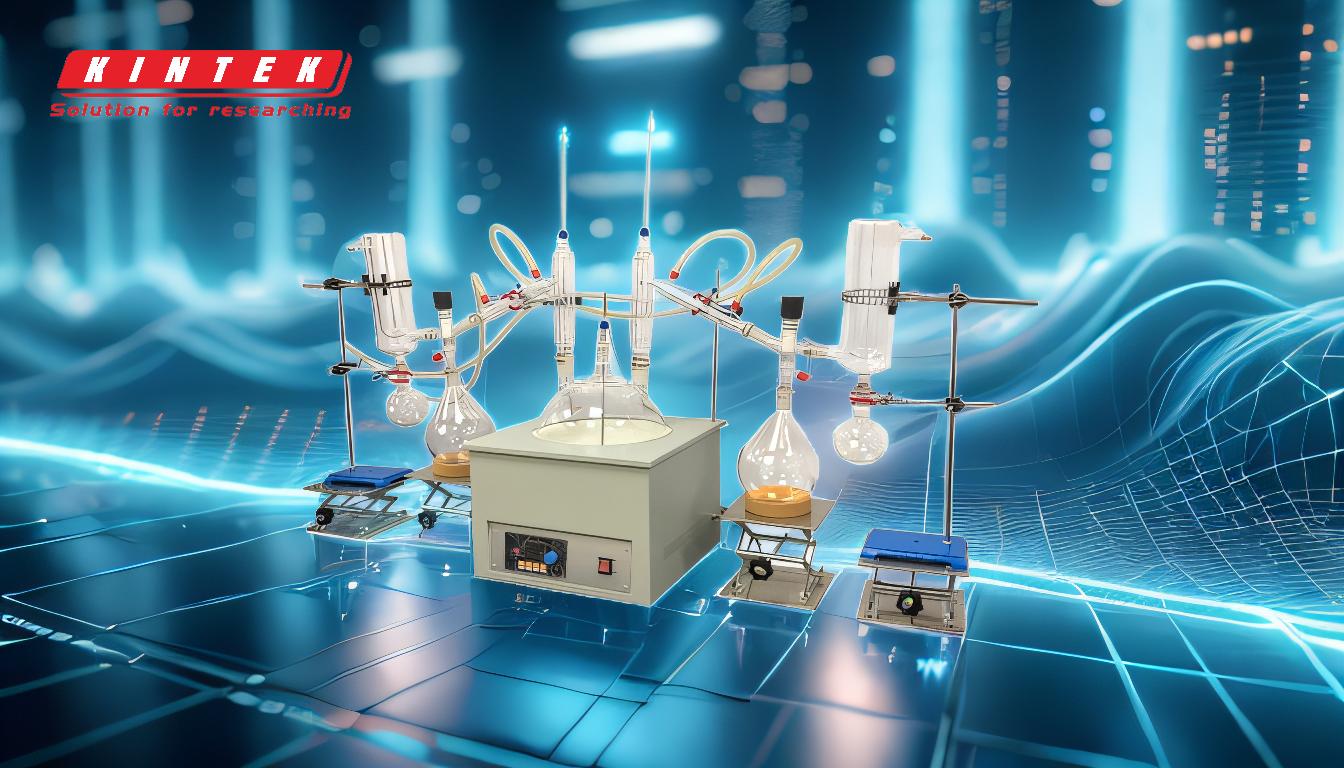Distillation efficiency depends on the specific application, the properties of the substances being separated, and the desired purity of the final product. Fractional distillation is generally the most efficient for separating liquids with close boiling points, such as in petroleum refining, due to its ability to achieve higher purity through multiple vaporization-condensation cycles. However, molecular distillation excels in applications requiring low-pressure environments and high purity for heat-sensitive materials, such as natural products. The choice of distillation method is not about inherent superiority but rather about matching the process to the specific requirements of the separation task.
Key Points Explained:

-
Types of Distillation and Their Applications:
- Simple Distillation: Best for separating liquids with significantly different boiling points. It is less efficient for mixtures with close boiling points.
- Fractional Distillation: Highly efficient for separating liquids with similar boiling points, such as in petroleum refining. It uses a fractionating column to allow multiple vaporization-condensation cycles, enhancing separation.
- Steam Distillation: Ideal for extracting heat-sensitive compounds, such as essential oils, without degradation.
- Vacuum Distillation: Suitable for separating compounds with high boiling points or those that decompose at high temperatures. It operates under reduced pressure, lowering boiling points.
- Short Path Distillation: Used for high-purity separation of heat-sensitive materials, such as in the pharmaceutical and food industries. It minimizes thermal degradation by reducing the distance vapors travel.
-
Efficiency Factors:
- Boiling Point Differences: Fractional distillation is more efficient for mixtures with close boiling points due to its ability to perform multiple separation stages.
- Heat Sensitivity: Molecular and short path distillation are more efficient for heat-sensitive materials, as they operate under low pressures and minimize thermal exposure.
- Purity Requirements: Fractional distillation achieves higher purity levels for complex mixtures, while molecular distillation is better for high-purity, low-volume applications.
-
Industrial and Laboratory Applications:
- Fractional Distillation: Dominates in petroleum refining and chemical manufacturing due to its scalability and efficiency in separating complex mixtures.
- Molecular Distillation: Preferred in industries requiring high-purity products, such as pharmaceuticals, nutraceuticals, and food processing.
-
Choosing the Right Method:
- The efficiency of a distillation method is context-dependent. Factors to consider include:
- The boiling points of the components.
- The thermal stability of the materials.
- The required purity of the final product.
- The scale of the operation (laboratory vs. industrial).
- The efficiency of a distillation method is context-dependent. Factors to consider include:
-
Comparative Analysis:
- Fractional vs. Simple Distillation: Fractional distillation is more efficient for complex mixtures but requires more energy and equipment.
- Molecular vs. Fractional Distillation: Molecular distillation is more efficient for heat-sensitive materials but is less suitable for large-scale operations compared to fractional distillation.
In conclusion, fractional distillation is the most efficient method for separating liquids with close boiling points, while molecular distillation is superior for heat-sensitive, high-purity applications. The choice of distillation method should align with the specific requirements of the separation task, considering factors such as boiling points, thermal stability, and desired purity.
Summary Table:
| Distillation Method | Best For | Key Advantages |
|---|---|---|
| Simple Distillation | Separating liquids with significantly different boiling points | Low cost, easy setup |
| Fractional Distillation | Separating liquids with close boiling points (e.g., petroleum refining) | High purity through multiple vaporization-condensation cycles |
| Steam Distillation | Extracting heat-sensitive compounds (e.g., essential oils) | Prevents thermal degradation |
| Vacuum Distillation | Separating high-boiling-point or heat-sensitive compounds | Operates at reduced pressure, lowering boiling points |
| Molecular Distillation | High-purity separation of heat-sensitive materials (e.g., pharmaceuticals) | Low-pressure environment, minimal thermal exposure |
Need help selecting the right distillation method for your application? Contact our experts today for personalized guidance!









